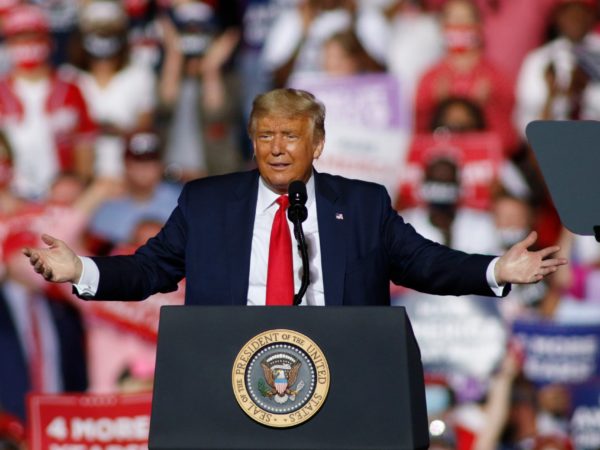Today the United States’s greatest fear is “socialism” or, thanks to the Cold War, communism. In America the word socialist is thrown around a lot, particularly as an excuse to discredit Democrats, while the left has now begun to call Republicans, specifically President Donald Trump, “fascists”. Labels such as these are a crucial part of politics. They’re how the public, media and politicians are able to distinguish themselves from one another. They help bring communities together as well as tear them apart. However, the overuse of these terms hasn’t just redefined their actual meanings, but has also shaped how politics play out in the modern day.
About 100 years ago, the fascist party came to dominate over the country of Italy. Benito Mussolini, now one of the major faces of fascism alongside Adolf Hitler, was named prime minister in 1922 and built a cult of followers that would give him the power to dictate over the region until 1943. But, by the end of World War II, the fascist regimes of both Italy and Germany collapsed. Giovanni Gentile, known as the “father” of fascism, was an Italian politician who popularized the fascist ideology. In his perspective, its purpose was to unite the state and the people under a strong central government, prioritizing the state’s ideological perspective of freedom over that of individuals. The main concern with fascism was that people would have to accept the views of the state regardless of their personal opinions or struggles. If people didn’t, then they were forced to. The will of the state would become the will of the leader, resulting in a dictator.
Over time the word fascist has become more of an insult which radicalizes nationalism rather than a whole political movement. President Trump has encouraged violence, deployed federal forces on American cities and ran a campaign with the slogan “Make America Great Again.” His actions mirror those of authoritarian regimes, but in reality, President Trump is a populist, not a fascist. Trump has demonized his rivals, constantly attacked the media and disregarded powers outside executive control, key components of populism and now Trumpism. Despite America’s difficult times, what he has done to maintain his idea of peace is no different from presidents that came before him. He isn’t ruling with an iron fist like Mussolini. Instead, President Trump mocks reporters and politically advertises himself on Twitter.
President Trump’s main goal throughout his entire presidency has been to appeal to ordinary people, the strategy that got him into office. More effectively is his promotion of nationalism and opposition of immigrants. In his speeches he has even used words such as “we” and “our” to give the impression that Americans as a society come first. This language has aided him in distinguishing us, Americans, from foreigners, and created a greater emphasis on nationalism with a right-wing ideology. However, calling President Trump a fascist should not just be avoided because he lacks the key elements that categorize him into that area, but also because overusing the term when criticizing his policies ignores the history and real meaning behind fascism.
The use of the word “fascism” has risen over the years, but more popular in America is its political counterpart “socialism”. According to the Merriam-Webster’s online dictionary, socialism is “any of various economic and political theories advocating collective or governmental ownership and administration of the means of production and distribution of goods.” Democrats like Bernie Sanders have embraced the misunderstood term used by the GOP to attack more left-leaning policies, but even Senator Sanders himself is not a “true” socialist, he’s a Social Democrat. Bernie’s ideology greatly regulates capitalism but does not do away with it like socialism would.
Republicans have had a long history of calling many Democrat run policies “socialist” as a means of preventing their ideas from gaining support. This is heavily due to the Cold War era’s ideological conflict between the United States and the Soviet Union beginning in 1947 and lasting until 1991. In addition, the first and second Red Scares spread the fear of communism in America. Socialism is not communism, no matter how many right-wing supporters want to say otherwise. In a communist regime people cannot own property whereas property ownership is still possible under socialism, and although both of them reject capitalism, communism seeks to violently overthrow the middle and upper classes, while in contrast, socialism seeks to reform an existing social system.
Leftist policies that are branded as socialist or communist are a result of America’s bad history with the movements. A Democrat offering a more liberal or progressive idea, however, does not make them a socialist or a communist. Capitalism has created inequality while expanding opportunity. The issue lies in that certain individuals may have more advantages than others, and that is why socialism, or socialist ideas, have become so popular.
Overusing labels has been happening for so long that most people forget the meanings of the words they use. “Socialist” and “fascist” have become derogatory terms meant to instill fear as a method of undermining possible solutions to problems. The less the history behind the words are understood, the more people move away from making educated decisions.

